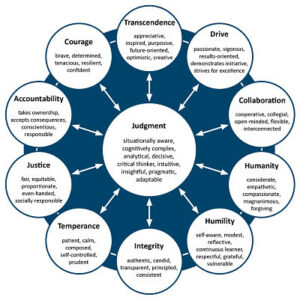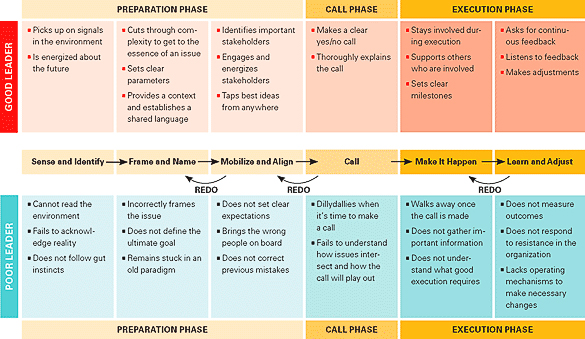Leadership & Judgment
Leadership Character: The Role of Judgment
Our recently released Leadership Character Insight Assessment (LCIA) defines and measures leadership character. The LCIA measures 11 dimensions of character, each of which gets broken down into specific elements that can be observed as situationally appropriate behaviors (see Figure 1). Over the next several weeks we will be focusing a feature blog post on each of the character dimensions, starting with Judgment.

Figure 1: LCIA dimensions and elements
What is Judgment?
In the LCIA, we define exhibiting judgment as:
- Making sound decisions in a timely manner based on relevant information and critical analysis of facts.
- Appreciating the broader context when reaching decisions.
- Showing flexibility when confronted with new information or situations.
- Having an implicit sense of the best way to proceed.
- Seeing into the heart of challenging issues.
- Reasoning effectively in uncertain or ambiguous situations.
Judgment is unique in that it plays a critical role and has an impact on all the dimensions in the LCIA character model. Judgment is like an air traffic controller that regulates how you navigate challenging situations, and whether you dial up or dial down on a dimension to arrive at an effective decision. Although you need the capacity to access all of the dimensions, Judgment will enable you to know which elements of character are most important in specific situations and when to let other dimensions of character play supporting roles.
Judgment is further defined by the following 9 key elements:
- Situationally Aware: Demonstrates an appreciation for unique circumstances that may dictate unique approaches.
- Cognitively Complex: Analyzes, makes clear sense, and draws sound conclusions in uncertain, complex and ambiguous circumstances.
- Analytical: Skilfully analyzes and employs logical reasoning.
- Decisive: Promptly makes astute, level-headed decisions. Shows clear-sighted discernment of what is required.
- Critical Thinker: Applies sound analysis and logical reasoning to evaluate ideas, decisions, and outcomes.
- Intuitive: Understands things without an apparent need for conscious reasoning.
- Insightful: Grasps the essence of situations. Sees into the heart of challenging issues.
- Pragmatic: Understands, develops, and implements workable solutions under varied circumstances.
- Adaptable: Modifies plans, decisions and actions to adjust to new conditions.
Making Judgment Calls
In HBR’s Making Judgment Calls, the authors discuss the phases of the Judgment Process and explain that:
“Leaders who demonstrate good judgment understand that judgment is a process, not an event. It unfolds over three phases, each of which has its own challenges and opportunities. One of the most important elements of the judgment process is what we call the “redo loop” – the opportunity to go back and try again if you’ve skipped a step or handled it poorly. Redo loops are built in at certain points in the process.”

Figure 2: The Phases of the Judgment Process, Making Judgment Calls, HBR, October 2007
You can see that a leader would be required to demonstrate many of the judgment elements throughout the process. Not the least of which being adaptability during the redo loops.
In the same article, the authors, Noel Tichy and Warren Bennis contend that “a leader’s most important role in any organization is making good judgments—well-informed, wise decisions that produce the desired outcomes. When a leader shows consistently good judgment, little else matters. When he or she shows poor judgment, nothing else matters. Of course, it isn’t humanly possible to make the right call every single time. But the most effective leaders make a high percentage of successful judgment calls, at the times when it counts the most.”
As senior leaders, we strive to demonstrate excellent judgment when making decisions that are in the best interest of our employees, our customers, and the organization’s bottom line. The LCIA provides us with an opportunity to identify our strengths and development opportunities as they relate to judgment and each of the contributing elements. The resulting self-awareness can make us more aware of how each element impacts our decision-making and what we can develop so that we are ready for those times when good judgment counts the most.
Click here for more info on the LCIA.
Interested in using SIGMA’s tools and coaching services to guide your employees in their path to becoming successful leaders? Visit our leadership coaching information webpage, or contact Glen Harrison for details.
